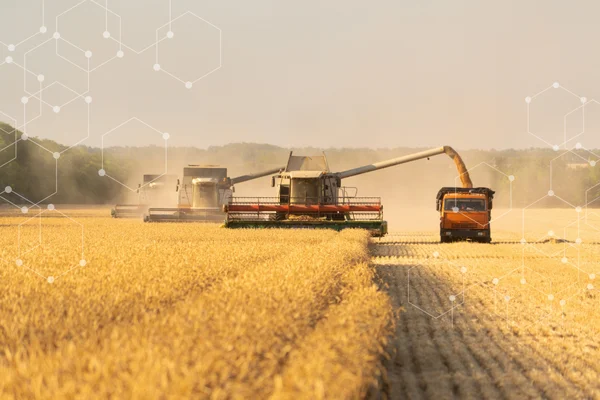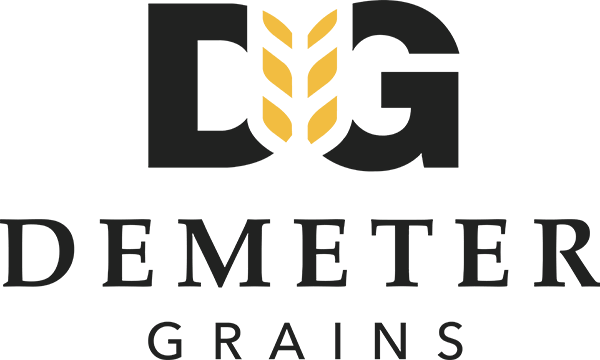Introduction: Mastering Harvest
For Canadian grain farmers operating without on-farm storage, the harvest period is exceptionally critical. Every decision made before and during harvest, along with execution, quality control, and logistical precision, directly impacts your farm’s profitability. Unlike operations with on-farm storage that offer the flexibility to store and market grain later, your crop must meet stringent elevator specifications—covering crucial aspects like moisture content, grade, and cleanliness—at the moment of delivery.1 This guide provides actionable strategies to help you optimize your harvest operations when selling directly to local grain elevators.
Section 1: Pre-Harvest Groundwork: Laying the Foundation for Success
Thorough pre-harvest groundwork is fundamental for a smooth and profitable harvest season, especially when relying on direct elevator deliveries. This involves meticulous crop-specific planning, accurate field assessments, diligent machinery preparation, and a clear understanding of pre-harvest aids.
A. Strategic Crop-Specific Harvest Planning & Field Assessments
Your harvest plan must be tailored to the unique requirements of each crop you grow, always keeping elevator standards and potential quality impacts in mind.1 Understanding how each crop’s characteristics interact with grading factors is essential. Key factors include moisture content (e.g., wheat typically around 14.5% 1, canola around 10% 2), the presence of foreign material, and the percentage of damaged kernels.4 For detailed guidance on specific crops:
- Wheat: The primary focus is achieving optimal moisture. Vigilant monitoring for Fusarium head blight (which can lead to Deoxynivalenol, or DON, a mycotoxin) is crucial.4 If considering pre-harvest glyphosate, be acutely aware of Maximum Residue Limits (MRLs) – the highest level of a pesticide residue that is legally tolerated in food or feed – and ensure buyer acceptance, as some markets have strict restrictions.3
- Canola: Timing is critical to minimize shatter losses and maintain a low green seed count. Swathing (cutting the crop and laying it in windrows to dry) at approximately 60% Seed Colour Change (SCC) on the main stem is a widely recommended benchmark.2 Direct combining is also an option, often facilitated by pre-harvest aids, but the shatter resistance of your chosen cultivar is paramount.2 The Canola Council of Canada offers an excellent Harvest Management guide for more details.2
- Oats: Precise timing of oat harvest prevents hull damage and shattering losses. Swathing is recommended when kernel moisture content is between 30% and 36%.3 If straight combining, ensure no green hulls are present to meet milling grade standards. Exercise caution with pre-harvest glyphosate application, as not all buyers accept treated oats, and some markets impose strict limits on residues.3 The Prairie Oat Growers Association (POGA) is a key resource for oat-specific information.6
- Corn & Soybeans: Primarily, focus on achieving appropriate moisture levels for elevator delivery (e.g., soybeans around 13% 7). The structural integrity of corn stalks and the lodging potential in soybeans can significantly influence the harvest order of different fields.7
Alongside crop-specific planning, conduct regular and thorough field walks in the weeks leading up to harvest. Don’t just check field edges; assess multiple representative areas to understand overall crop condition and variability. Identify distinct maturity zones within fields. For canola, accurate SCC assessment is vital for timing swathing or desiccation.2 For crops like corn and soybeans, assess standability and lodging risk.7
B. Machinery Tune-Up: Calibration, Maintenance, and Safety
For farmers delivering directly to elevators, a well-maintained and properly calibrated combine acts as the first line of quality control, minimizing dockage (deductions for impurities) and preventing costly downtime.8
- Comprehensive Checklist:
- Cleaning: Thoroughly clean the entire combine, including all filters (air, cabin, oil, fuel), the stone trap, threshing system, and grain tank. This removes old crop residues and prevents contamination.8
- Wear and Tear Inspection: Meticulously check all belts, chains, knives and related header parts (ensure sharpness and proper function), brakes, the combine concave (inspecting bars and wires for damage or wear), grain tank and elevator components, and sieves. Replace worn parts promptly.8
- System Checks: Change hydraulic oil as recommended. Inspect and test all sensors, lights (critical for potential night harvesting), tire pressures, drive shafts, and clutches.8
- Calibration for Elevator Delivery: Calibrate the combine to minimize foreign material and damaged kernels, as these are key grading factors.10
- Truck and Auger Maintenance: Trucks used for hauling grain must be clean and roadworthy. Augers should be inspected for wear, particularly on intake flights, and properly lubricated.
- Safety First: Before and during harvest, prioritize safety. Ensure all safety guards are in place and functional. Have fully charged fire extinguishers readily accessible. Review safety procedures with all personnel. Farm safety resources are available from organizations like the(https://casa-acsa.ca/).
C. Understanding and Strategically Using Pre-Harvest Aids
Pre-harvest aids, such as desiccants (drying agents) and certain herbicides like glyphosate or saflufenacil, can help manage perennial and annual weeds, facilitate faster and more uniform crop dry-down, and help manage harvest timing.1 This is particularly beneficial for enabling straight-cutting or managing uneven fields. However, their use requires a careful balance between operational efficiency and market acceptability.
- Product Choice & Application Timing:
- Diquat (Desiccant): Provides fast dry-down. Do not apply too early on immature crops, as it halts maturation.2
- Glyphosate: Controls perennial weeds and can accelerate crop dry-down. Apply only when grain moisture is below 30% (e.g., in oats 3 and canola 2) to avoid unacceptable residue levels.
- Saflufenacil (e.g., Heat LQ): Provides crop dry-down and controls annual weeds.2
- Maximum Residue Limits (MRLs) and Market Acceptance: Strict adherence to label specifications for application rates, water volumes, and Pre-Harvest Intervals (PHIs) – the mandatory waiting period between pesticide application and harvest – is crucial to avoid exceeding MRLs.2 Utilize resources like the Keep it Clean Pre-Harvest Interval calculator to ensure compliance.2 Crucially, confirm specific buyer requirements before applying any pre-harvest aid, as some markets (especially for oats) may not accept grain treated with products like glyphosate.3 Generally, more than one pre-harvest glyphosate application is not recommended.2
Section 2: Executing an Efficient Harvest: From Field to Truck
Once pre-harvest preparations are complete, the focus shifts to efficient execution in the field and meticulous management of the harvested grain up to the point of loading for elevator delivery.
A. Choosing the Right Harvest Method & Moisture Management
The selection of a harvest method—swathing, desiccation followed by straight cutting, or straight cutting alone—is a strategic decision balancing speed and labor savings against risks like weather exposure and shatter losses.1
- Swathing: This method involves cutting the crop and laying it in windrows to dry. For canola, optimal timing is around 60% SCC or later.2 For oats, swath when kernel moisture is 30-36%.3
- Direct Combining (Straight Cutting): This involves cutting and threshing in a single pass. It’s best for shatter-resistant canola varieties, often used with pre-harvest aids.2 Harvest canola when overall seed moisture is 10% or less and green seed is minimal.2 If straight cutting oats, ensure no green hulls are present.3
Moisture content is arguably the most critical factor for elevator acceptance and preserving grain quality.1 Delivering grain over the acceptable moisture limit will typically result in rejection or significant drying charges at the elevator.1 The federal carbon tax on fuels like propane and natural gas used for grain drying can further increase these costs, making it even more important to harvest at the correct moisture.16
- Elevator Requirements: Canola is generally considered dry at 10% moisture, wheat at 14.5%.1 Always confirm with your local elevator.
- On-Farm Moisture Testing: Use a properly calibrated moisture tester to check grain samples from various parts of each field.1
B. Minimizing In-Field Harvest Losses & Sequencing Harvest
Minimizing grain loss in the field directly translates to more grain delivered and sold. Combine settings are the most critical controllable factor.
- Combine Settings & Calibration: Accurately measure losses using drop pans (disengage spreaders during measurement), not just relying on electronic loss monitors, which only give a relative indication.5 Aim for a loss of around 1%, though up to 3% might be tolerated under pressure.5 Adjust only one combine setting at a time (e.g., cylinder/rotor speed, concave clearance, fan speed, or sieve opening) and re-measure losses.5 For canola-specific tips (slower rotor speed, wider concave clearance, reduced fan speed), consult resources like the Canola Council of Canada’s(https://www.canolacouncil.org/download/157/canola-encyclopedia/4898/ccc_pami_combine_seed_loss_guide_2017.pdf).5 For oats, reduce cylinder speeds and use wider concave clearances to prevent hull damage.3
- Operational Tactics: Operate the combine at an appropriate ground speed. Ensure even feeding into the combine.5 For canola, proper reel position and speed are crucial.2 Check for physical leaks on the combine.5 Always use tarpaulins to cover loaded grain trucks during transport.19
Strategically sequence the harvest across multiple fields based on crop maturity and moisture content, stalk integrity or lodging risk, and pest or disease pressure to maximize the volume of high-quality, elevator-ready grain.7
Section 3: Ensuring Top Grain Quality: Meeting Elevator Standards
Delivering high-quality grain is paramount. The grade assigned at the elevator directly determines the price received.
A. Canadian Grain Grading and Pre-Delivery Intelligence
The Canadian Grain Commission (CGC) is the federal agency responsible for establishing and maintaining Canada’s grain quality standards and the official grain grading system.21 Farmers should familiarize themselves with the relevant sections of the CGC’s Official Grain Grading Guide.21 Key grading factors include test weight, dockage (foreign material removed before grading), foreign material remaining after dockage removal, and damaged kernels.3 Specific crops have unique critical factors, such as green seed content in canola (No. 1 Canada typically allows up to 2% 2) or Deoxynivalenol (DON) levels in wheat.5
The CGC’s voluntary and free(https://www.grainscanada.gc.ca/en/grain-quality/harvest-sample/) provides farmers with an early, unofficial assessment of their grain’s quality (including dockage, protein, oil content, and DON levels for relevant crops) before delivery. This pre-delivery intelligence can highlight potential issues and help in making informed marketing decisions.5
B. On-Farm Quality Preservation and Dispute Navigation
Even without long-term storage, implement basic on-farm quality assessment. Use a reliable, calibrated moisture tester and visually inspect grain for issues like excessive foreign material or damaged kernels.10 Minimize handling damage, as each movement can create broken kernels.19
Prevent contamination by thoroughly cleaning all equipment (combines, trucks, augers) between different crop types and especially after handling treated seed, as chemical residues are a common reason for load rejection.19
If you disagree with an elevator’s grade or dockage assessment, you have the right to request a “Final Quality Determination” from the CGC.21 This request must typically be made within seven calendar days of delivery. The elevator is required to take and retain a representative 1-kilogram sample. The CGC’s inspection results are binding on both the producer and the elevator operator. If you still disagree, you can appeal the CGC’s determination to the Chief Grain Inspector for Canada within 15 days.22
Section 4: Streamlining Delivery Logistics to the Grain Elevator
Efficient delivery logistics are crucial when relying on grain elevators.
A. Strategic Elevator Selection & Communication
Choosing an elevator extends beyond mere proximity. Prioritize delivery to grain companies licensed by the Canadian Grain Commission (CGC) for access to producer protections like payment security and grade dispute resolution.2
Key factors when selecting an elevator include:
- Service Fees and Deductions: Inquire about all potential charges, including elevation (basic handling), dockage removal, storage (if applicable), and drying charges if grain is over moisture limits.2 Compare these between local elevators.
- Wait Times and Receiving Capacity: Especially during peak harvest, long wait times are costly.30 Ask about typical turnaround times, scheduling systems, and daily receiving capacity. Newer high-throughput elevators may offer significant advantages.9
- Grading Practices and Reputation: Consider an elevator’s reputation for fair and consistent grading and their dispute resolution process. Some elevators handling specialty grains may have on-site labs.33
- Contract Terms Offered: Compare pricing options (fixed price, basis contracts), payment timeliness, and clauses on quality discounts or delivery obligations.36
Proactive and clear communication with elevator operators is vital. Many larger elevators use appointment-based scheduling systems to manage truck traffic.4 Understand how to book slots, the typical length, and flexibility. The Port of Johnstown, for example, successfully uses three-hour blocks and multiple communication platforms (phone, Twitter, Facebook) to keep producers informed.4 Maintain regular updates on your harvest progress and estimated times of arrival (ETAs).39
B. Essential Documentation & On-Farm Transportation
Proper documentation is critical for smooth transactions and regulatory compliance.
- Declaration of Eligibility for Delivery of Grain: This is a mandatory document when delivering to any CGC-licensed grain company, confirming the variety being delivered is eligible for the kind and class being sold.41 A single declaration per crop year per licensee usually suffices.42 Farmers can request the CGC’s prescribed form.41
- Grain Contracts & Scale Tickets/Elevator Receipts: Have copies of sales contracts accessible. Carefully review scale tickets and elevator receipts for accuracy (weight, grade, dockage, moisture) before leaving the elevator, as these form the basis for payment.8
Optimize on-farm transportation by ensuring trucks are in good mechanical condition and thoroughly cleaned between loads, especially after hauling treated seed, to prevent cross-contamination.8 Aim for legal payloads without overloading. Plan efficient and safe routes, considering road conditions and weight limits.44 Coordinate truck movement with combine operation to minimize downtime. Always securely tarp grain loads to prevent spillage and protect quality.19
Section 5: Marketing Your Grain Advantageously via the Elevator System
For farmers delivering directly from the field, understanding grain contracts and cash bid evaluations is paramount as there’s no opportunity to hold grain for better terms later.
A. Decoding Grain Contracts & Evaluating Cash Bids
Grain contracts are legally binding documents.3 Common types include:
- Deferred Delivery Contract: Locks in a price, quantity, grade, and delivery period.36
- Basis Contract: Locks in the “basis” (the difference between the local cash price and a specific futures market price), leaving the futures price component open to be set later.36
- Supply Contract (Unpriced): Agrees to deliver a set tonnage during a specific period, with price typically set at or near delivery based on the spot price.36
- Production Contract: Agreement to deliver production from specified acres; price/volume may not be initially fixed.36
Key clauses to scrutinize in any contract include 3:
- Delivery Terms: Clearly define the delivery period, location, extension provisions, and terms for changes in location.
- Quantity & Quality Specifications: Specify exact grade, class, and tolerances for moisture, dockage, etc., and how discounts for lower grades are applied.
- Penalties & Default Clauses: Understand liquidated damages for failure to deliver.
- Grade Dispute Mechanisms: Should reference the CGC Official Grain Grading Guide and outline dispute processes.
- Force Majeure: How unforeseen circumstances (e.g., extreme weather) are handled.
- Set-offs: Clauses allowing the buyer to deduct outstanding farmer debts from payments.
Best practices for contract review include obtaining written contracts, reading thoroughly, comparing offers, negotiating terms if possible, and keeping signed copies.3 For guidance, resources like the Grain Farmers of Ontario’s Contract Guide 3 or provincial resources like Saskatchewan Agriculture’s grain contract information 39 can be helpful.
Evaluating cash bids involves understanding that Cash Price = Futures Price +/- Basis.29 The futures price is driven by broad market factors, while basis is influenced by local conditions like transportation costs, local supply/demand, elevator operating costs, and competition among buyers.29 A strong basis (high local cash price relative to futures) usually signals strong local demand or limited local supplies. A weak basis (low local cash price relative to futures) often indicates the opposite.29 Track local basis trends and compare current offers to historical norms. Alberta Agriculture provides useful information on understanding basis.29
B. Marketing Strategies & Understanding Deductions
Utilize tools like Alberta Agriculture’s(https://www.alberta.ca/grain-marketing-decision-grid) to analyze futures and basis scenarios and identify potential strategies (e.g., sell deferred futures if futures are strong but basis is weak; price cash grain if both are strong).11 Consider pre-harvest contracting for a portion of your anticipated crop to manage price risk, ensuring you only contract quantities you are confident you can produce and meet quality for.36
Be aware of all potential deductions from your gross grain sale. Elevators can charge for services like elevation (basic handling), dockage removal, storage (if applicable under certain contracts), drying, and cleaning.2 They may also pass on third-party costs like freight or inspection fees.2
Additionally, mandatory commodity levies or “check-offs” are deducted at the point of sale by the grain buyer and remitted to provincial commodity organizations (e.g., Alberta Grains for wheat and barley , SaskCanola for Saskatchewan canola , Grain Farmers of Ontario for Ontario corn, soybeans, and wheat , Producteurs de grains du Québec for Quebec grains 48). These funds support research, market development, and advocacy. Rates vary (e.g., Alberta wheat $1.09/tonne, Alberta barley $1.20/tonne ; SaskCanola $0.75/tonne ). Some check-offs, if non-refundable and used for qualifying research, may make producers eligible for Scientific Research and Experimental Development (SR&ED) tax credits.
Section 6: Financial Stewardship: Managing Costs and Resources
Effective financial management is crucial, especially when income is realized shortly after incurring significant harvest and delivery expenses.
A. Budgeting and Controlling Harvest Expenses
Develop detailed Cost of Production (COP) budgets for each crop enterprise.50 These typically include:
- Direct Variable Costs: Expenses directly tied to a specific crop, like seed, fertilizer, and pesticides.50
- Indirect Variable Costs: Expenses used across the farm that change with production levels, such as fuel, labour, and utilities.50
- Fixed Costs: Expenses that remain relatively constant, like land payments/rent, machinery depreciation/loan payments, property taxes, and insurance.50 Provincial resources like Ontario’s COP Guide 50 or Manitoba’s COP publications 51 can provide templates and benchmarks. Specifically budget for harvest fuel, repairs, labour, trucking, potential elevator charges (drying, cleaning 2), and interest on operating loans.50
Control key harvest expenses:
- Fuel Efficiency: Match equipment size to the task. Maintain proper tire pressure. Use the correct gear and optimal engine RPM (Revolutions Per Minute). Manage loads effectively. Perform regular maintenance (clean air filters, fresh oil). Reduce idling time. Optimize routes and field patterns.
- Labour Costs: Plan tasks and allocate labour efficiently. Use scheduling tools if applicable. Ensure thorough training. Consider cross-training staff for flexibility.
- Repair Costs: Prioritize preventative maintenance. Canada’s “Right-to-Repair” laws (Bill C-244 and Bill C-294) aim to give farmers more access to tools, information, and parts for machinery repair, potentially reducing costs and downtime. Shop around for parts and services if not doing repairs in-house. Leverage field data to prioritize critical machinery repairs.
B. Seasonal Labour and Seed Royalties
If hiring seasonal harvest labour:
- Plan Ahead: Assess labour needs well before harvest based on acreage, expected yield, and machinery.53
- Recruitment: Use online job boards (e.g., Indeed, AgHires), social media, and ensure a streamlined application/interview process.37 In Ontario, be aware that as of July 1, 2024, temporary help agencies and recruiters must be licensed; verify their status with the Ministry of Labour, Immigration, Training and Skills Development.54
- Compensation & Clarity: Offer competitive packages and provide clear job descriptions detailing responsibilities, hours, and training.37
- Training & Onboarding: Develop skill-specific training modules. Pair new hires with experienced workers. Cross-train where feasible.37
- Communication & Scheduling: Use flexible scheduling tools (e.g., Google Calendar) and real-time communication methods (e.g., WhatsApp). Hold regular briefings.37
- Safety & Well-being: Prioritize safety with appropriate Personal Protective Equipment (PPE) (e.g., hearing protection), regular breaks to combat fatigue, and monitoring for signs of tiredness.54
Understand the financial impact of Plant Breeders’ Rights (PBR). PBR grants breeders exclusive rights over new varieties.7 When purchasing certified seed of PBR-protected varieties (especially those under UPOV ’91, the International Union for the Protection of New Varieties of Plants 1991 Convention), a royalty is usually included in the price.7 The “Farmers’ Privilege” under UPOV ’91 allows farmers to save seed from a PBR-protected variety (for which they paid an initial royalty) to plant subsequent crops on their own holdings without further royalty payments.56 However, there are ongoing discussions about new royalty collection systems for farm-saved seed (FSS), particularly for cereals, such as:
- End-Point Royalties: A per-tonne royalty collected on harvested grain produced from FSS of a protected variety.7
- Trailing Contracts (or Trailing Royalties): An annual royalty paid on planted FSS of protected varieties, potentially adding significant costs (e.g., an estimated $250-$500 for an average Saskatchewan wheat farm).7 These potential changes could increase costs for farmers saving seed from new varieties.7
Section 7: Staying Ahead: Resources, Regional Adaptation, and Technology
The agricultural sector is dynamic. Staying informed and adaptable is essential.
A. Accessing Key Support and Adapting Strategies
Utilize resources from:
- Canadian Grain Commission (CGC): Offers the Official Grain Grading Guide, Harvest Sample Program, dispute resolution services, lists of licensed grain companies, and grain statistics.
- Agriculture and Agri-Food Canada (AAFC): Provides programs for business management (AgriStability, AgriInvest), cash flow (Advance Payments Program), innovation, and sustainable farming.
- Provincial Agriculture Ministries (e.g.,(https://www.ontario.ca/page/agriculture-food-and-rural-affairs),(https://www.alberta.ca/agriculture-forestry-and-rural-economic-development.aspx,(https://www.alberta.ca/agriculture-forestry-and-rural-economic-development.aspx))): Offer regionally specific information, extension services, and cost of production tools.50
- Grower Associations and Commodity Groups (e.g., Prairie Oat Growers Association (POGA) , Canola Council of Canada 2, Alberta Grains , Grain Farmers of Ontario (GFO) , Producteurs de grains du Québec (PGQ) 48): Provide crop-specific advice, market information, and research updates.
Adapt harvest strategies to regional nuances.
- Prairie Provinces (Alberta, Saskatchewan, Manitoba): Known for wheat, canola, barley, oats, and pulses. Characterized by long sunny summers but also cold winters and potential for early fall frosts. Swathing is common for canola and oats. Rail transport is key for moving grain to export.
- Ontario: Significant corn, soybean, and winter wheat production. Milder climate, longer growing season, but higher humidity can necessitate artificial drying for corn.
- Quebec: Major crops include corn, soybeans, and cereals. Climate similar to Ontario. Relies on St. Lawrence Seaway ports for export. Climate change is impacting harvest windows and conditions across all regions, necessitating greater adaptability.
B. Leveraging Technology
Technology enhances precision, efficiency, and data-driven decision-making.
- Precision Agriculture Technologies: Global Positioning System (GPS) mapping and guidance systems enable precise field operations. Unmanned Aerial Vehicles (UAVs or drones) allow for aerial crop monitoring to identify issues like variable maturity. Smart sensors provide real-time data on soil moisture and temperature.
- Farm Management Software: Platforms like AgriChain facilitate detailed record-keeping (planting, inputs, harvest data), operational scheduling, and data analytics for better decision-making and traceability.
- Advanced Machinery Technology: Modern combines offer increased throughput and sophisticated grain quality management systems. Yield monitors provide spatial data on crop performance.
- Elevator Interaction: Many elevators now use online or app-based systems for booking delivery appointments, streamlining traffic flow.4
Conclusion: Integrating Strategies for Success
Successfully navigating the harvest season when delivering directly to grain elevators requires integrating comprehensive pre-harvest planning, precise in-field execution, rigorous attention to grain quality, efficient logistics, astute marketing, and sound financial management. The absence of on-farm storage amplifies the importance of each step. Key principles include meeting elevator quality standards, diligent machinery preparation, strategic harvest timing, proactive communication with elevators, understanding grain contracts and market dynamics, and prudent financial planning. Continuous learning, adaptability, and proactive management are fundamental to achieving sustained profitability in an ever-evolving agricultural landscape.
Works cited
- Let’s Talk Farming: What’s The Scoop On Harvesting And Grain …, accessed on May 19, 2025, https://saifood.ca/ltf5-harvesting-and-storage/
- Harvest management | Canola Encyclopedia, accessed on May 19, 2025, https://www.canolacouncil.org/canola-encyclopedia/harvest-management/
- Harvest and Storage – Prairie Oat Growers Association (POGA), accessed on May 19, 2025, https://poga.ca/production-resources/oat-growers-manual/harvest-and-storage/
- Grain harvest and export quality – Canadian Grain Commission (CGC), accessed on May 19, 2025, https://www.grainscanada.gc.ca/en/grain-research/grain-harvest-export-quality/
- Harvest Sample Program: About the program, accessed on May 19, 2025, https://www.grainscanada.gc.ca/en/grain-quality/harvest-sample/
- The Fuel-Saving Farmer: Tips for Improving Tractor Performance, accessed on May 19, 2025, https://www.ceatspecialty.com/in/blog/agriculture/the-fuel-saving-farmer-tips-for-improving-tractor-performance
- 5 Steps to Help Determine Harvest Order | WinField United …, accessed on May 19, 2025, https://www.winfieldunited.com/news-and-insights/5-steps-to-help-determine-harvest-order
- The pre-harvesting maintenance guide | TVH, accessed on May 19, 2025, https://www.tvh.com/learning-hub/the-pre-harvesting-maintenance-guide
- Pre-Harvest Farm Equipment Checklist – Grinnell Mutual, accessed on May 19, 2025, https://www.grinnellmutual.com/farm-safety-tips-resources/farm-equipment-checklist
- Get the most out of your harvest: Tips to get the best prices at the …, accessed on May 19, 2025, https://www.farmanddairy.com/top-stories/get-the-most-out-of-your-harvest-tips-to-get-the-best-prices-at-the-elevator/284577.html
- How to reduce combine loss | Canola Council of Canada, accessed on May 19, 2025, https://www.canolacouncil.org/canola-watch/fundamentals/how-to-reduce-combine-loss/
- Avoid Costly Downtime: Prepare Your Combine Harvester Now – CEAT Specialty, accessed on May 19, 2025, https://stage.ceatspecialty.com/gb/blog/equipment/avoid-costly-downtime-prepare-your-combine-harvester-now
- Avoid Costly Downtime: Prepare Your Combine Harvester Now – CEAT Specialty Tires, accessed on May 19, 2025, https://www.ceatspecialty.com/gb/blog/equipment/avoid-costly-downtime-prepare-your-combine-harvester-now
- Canadian grain grading changes coming for the 2023-2024 crop year – Canada.ca, accessed on May 19, 2025, https://www.canada.ca/en/grain-commission/news/2023/06/canadian-grain-grading-changes-coming-for-the-2023-2024-crop-year.html
- Deductions for handling your grain, accessed on May 19, 2025, https://www.grainscanada.gc.ca/en/protection/delivery/deductions-handling-grain.html
- Estimated costs of carbon pollution pricing in relation to grain drying in 2019 – Canada.ca, accessed on May 19, 2025, https://agriculture.canada.ca/en/sector/data-reports/estimated-costs-carbon-pollution-pricing-relation-grain-drying
- Grain Transportation in Western Canada – Library of Parliament, accessed on May 19, 2025, https://lop.parl.ca/sites/PublicWebsite/default/en_CA/ResearchPublications/202313E
- Competition Bureau’s remedy assessment letter to the Minister of Transport for Bunge’s proposed acquisition of Viterra, accessed on May 19, 2025, https://competition-bureau.canada.ca/en/how-we-foster-competition/education-and-outreach/competition-bureaus-remedy-letter-minister-transport-bunges-proposed-acquisition-viterra-0
- Managing stored grain – Ontario Grain Farmer, accessed on May 19, 2025, https://ontariograinfarmer.ca/2024/09/01/managing-stored-grain/
- Transportation of wheat – Skuld, accessed on May 19, 2025, https://www.skuld.com/topics/cargo/solid-bulk/agricultural-cargoes/transportation-of-wheat/
- Pre-Harvest Checklist – Valley View Agri-Systems, accessed on May 19, 2025, https://valleyviewagri.com/pre-harvest-checklist/
- Regulations Amending the Canada Grain Regulations: SOR/2022-195, accessed on May 19, 2025, https://gazette.gc.ca/rp-pr/p2/2022/2022-10-12/html/sor-dors195-eng.html
- What We Heard: Canada Grain Act Review Consultations, accessed on May 19, 2025, https://agriculture.canada.ca/en/department/transparency/public-opinion-research-consultations/canada-grain-act-review-consultations
- SR&ED Tax Credit – Alberta Canola Producers Commission, accessed on May 19, 2025, https://albertacanola.com/research/sred-tax-credit/
- Farm safety at harvest | Canola Council of Canada, accessed on May 19, 2025, https://www.canolacouncil.org/canola-watch/2014/08/27/farm-safety-at-harvest/
- Print – Canadian Agricultural Safety Association, accessed on May 19, 2025, https://casa-acsa.ca/en/format/print/
- Crop contracts | Alberta.ca, accessed on May 19, 2025, https://www.alberta.ca/crop-contracts
- The Port of Johnstown – Ontario Grain Farmer, accessed on May 19, 2025, https://ontariograinfarmer.ca/2017/09/01/the-port-of-johnstown/
- How Canadian Farmers Are Revolutionizing Agriculture (And Why It Matters), accessed on May 19, 2025, https://organicagcentre.ca/sustainable-farming-practices/how-canadian-farmers-are-revolutionizing-agriculture-and-why-it-matters/
- Canadian Grain Commission, accessed on May 19, 2025, https://www.grainscanada.gc.ca/en/
- Crop Rotations Ensure A Sustainable Future For Agriculture – Canadian Food Focus, accessed on May 19, 2025, https://canadianfoodfocus.org/on-the-farm/crop-rotations-ensure-a-sustainable-future-for-agriculture/
- Know your cost of production for better decision making | FCC – Farm Credit Canada, accessed on May 19, 2025, https://www.fcc-fac.ca/en/knowledge/know-your-cost-of-production-for-better-decision-making
- ELEVATED GRAINS – The BrewDeck Podcast – Country Malt Group, accessed on May 19, 2025, https://resources.countrymalt.com/elevated-grains/
- Get through harvest season safely – Workplace Safety & Prevention Services, accessed on May 19, 2025, https://www.wsps.ca/resource-hub/greenhouse-growers/get-through-harvest-season-safely
- YOUR GUIDE TO FOOD & FARMING IN CANADA – Real Dirt on Farming, accessed on May 19, 2025, https://www.realdirtonfarming.ca/wp-content/uploads/2023/10/Real-Dirt-6th-Layout-online.pdf
- Harvesting – Winter Canola Extension, accessed on May 19, 2025, http://canola.okstate.edu/cropproduction/harvesting
- Grain Contracts | Saskatchewan Farm Business Management, accessed on May 19, 2025, https://www.saskatchewan.ca/business/agriculture-natural-resources-and-industry/agribusiness-farmers-and-ranchers/farm-business-management/grain-contracts
- NEW ELEVATOR OPTION FOR NORTHERN ALBERTA FARMERS – GrainsWest, accessed on May 19, 2025, https://grainswest.com/2020/07/new-elevator-option-for-northern-alberta-farmers/
- Canada Grain Act review – agriculture.canada.ca, accessed on May 19, 2025, https://agriculture.canada.ca/en/department/transparency/public-opinion-research-consultations/canada-grain-act-review-consultations/canada-grain-act-review
- Can machine-grown lettuce help cut Canada’s reliance on U.S. greens? This farmer is betting on it, accessed on May 19, 2025, https://ca.news.yahoo.com/machine-grown-lettuce-help-cut-080000646.html
- Rail-Served Grain Facilities Coming Online, Earning Awards – Railway Age, accessed on May 19, 2025, https://www.railwayage.com/freight/class-i/rail-served-grain-facilities-coming-online-earning-awards/
- Delivery eligibility declaration questions and answers, accessed on May 19, 2025, https://grainscanada.gc.ca/en/licences/declaration-questions-and-answers.html
- Newly formed oilseeds organization introduced | The Western Producer, accessed on May 19, 2025, https://www.producer.com/news/newly-formed-oilseeds-organization-introduced/
- Canadian Seed Sector Satisfaction with Royalties and Regulations …, accessed on May 19, 2025, https://www.schoolofpublicpolicy.sk.ca/csip/publications/making-waves/canadian-seed-sector-satisfaction-with-royalties-and-regulations.php
- Grain marketing decision grid | Alberta.ca, accessed on May 19, 2025, https://www.alberta.ca/grain-marketing-decision-grid
- Farm ERP – KhetiBuddy Canada, accessed on May 19, 2025, https://khetibuddy.com/ca/products/farm-erp/
- Report Name: Grain and Feed Update, accessed on May 19, 2025, https://apps.fas.usda.gov/newgainapi/api/Report/DownloadReportByFileName?fileName=Grain%20and%20Feed%20Update_Ottawa_Canada_CA2025-0003.pdf
- Exit Decisions in the Canadian Grain Elevator Industry – Transportation Research Forum, accessed on May 19, 2025, https://trforum.org/wp-content/uploads/2020/03/grain_elev-submitted-to-trf-conference.pdf
- Grants, subsidies and contributions – Agriculture, accessed on May 19, 2025, https://sbs-spe.feddevontario.canada.ca/grants-subsidies-and-contributions-agriculture
- gfo.ca, accessed on May 19, 2025, https://gfo.ca/wp-content/uploads/2023/10/Grain-Contracts-Guide-Grain-Farmers-of-Ontario-v2023-01w-final.pdf
- Eligible Wheat and Barley producers can claim SR&ED credit on their 2024 taxes, accessed on May 19, 2025, https://www.albertagrains.com/press-releases/eligible-wheat-and-barley-producers-can-claim-sr-ed-credit-on-their-2024-taxes
- Agricultural programs and services – Canada.ca, accessed on May 19, 2025, https://agriculture.canada.ca/en/programs
- Pro Tips for Quick and Fast Seasonal Farm Labor – Number Analytics, accessed on May 19, 2025, https://www.numberanalytics.com/blog/pro-tips-quick-fast-seasonal-farm-labor
- Producteurs – PGQ, accessed on May 19, 2025, https://pgq.ca/producteurs
- Ontario Grain Harvest 2024: Top Sustainable Farming Tips – – Farmonaut, accessed on May 19, 2025, https://farmonaut.com/canada/ontario-grain-harvest-2024-top-sustainable-farming-tips
- Croptracker – Farm Management Software, accessed on May 19, 2025, https://www.croptracker.com/
- Traceability – Province of British Columbia – Gov.bc.ca, accessed on May 19, 2025, https://www2.gov.bc.ca/gov/content/industry/agriculture-seafood/food-safety/traceability
- Data quality, concepts and methodology: Explanatory notes on direct program payments to agriculture producers 2024, accessed on May 19, 2025, https://www.statcan.gc.ca/en/statistical-programs/document/5229_D1_V9
- Canada – Cash Bids Index – Rolling Acres Grain, accessed on May 19, 2025, https://www.rollingacresgrain.com/cashbids
- M-35.1, r. 171.1 – Règlement sur les contributions des producteurs de grains du Québec, accessed on May 19, 2025, https://www.legisquebec.gouv.qc.ca/fr/ShowDoc/cr/m-35.1,%20r.%20171.1
- Minister Duguid announces federal investments to accelerate value-added agriculture across Alberta – Canada.ca, accessed on May 19, 2025, https://www.canada.ca/en/prairies-economic-development/news/2025/03/minister-duguid-announces-federal-investments-to-accelerate-value-added-agriculture-across-alberta.html
- Basis – How cash grain prices are established | Alberta.ca, accessed on May 19, 2025, https://www.alberta.ca/basis-how-cash-grain-prices-are-established
- Fruit Picking with Smart Harvest Scheduling – KhetiBuddy Canada, accessed on May 19, 2025, https://khetibuddy.com/ca/blogs/fruit-picking-with-smart-harvest-scheduling/












